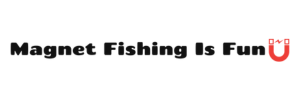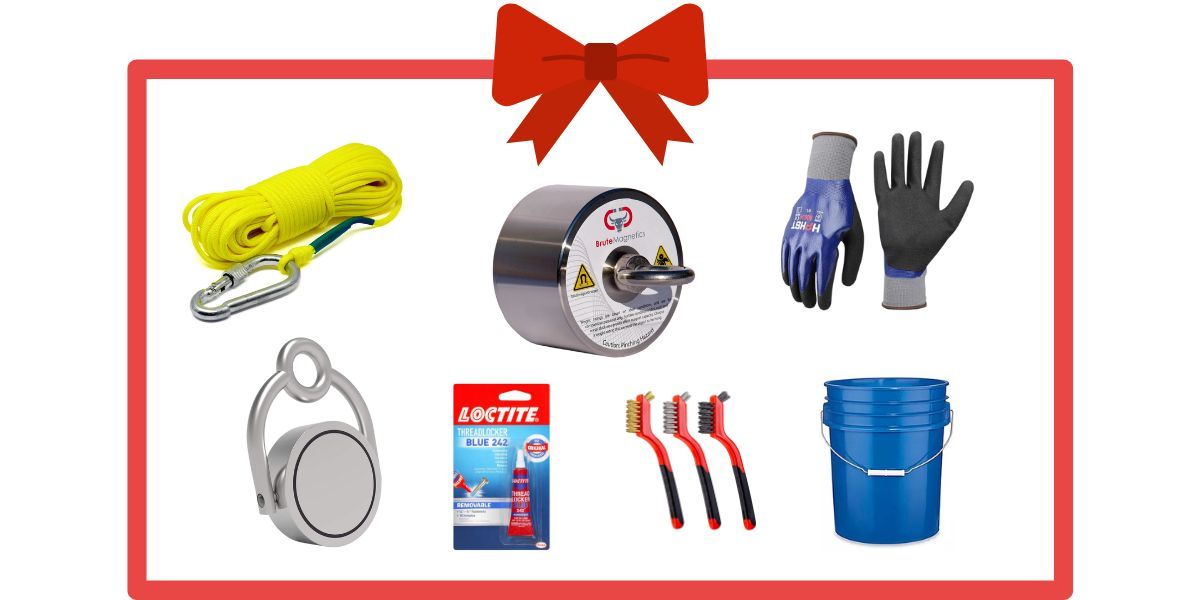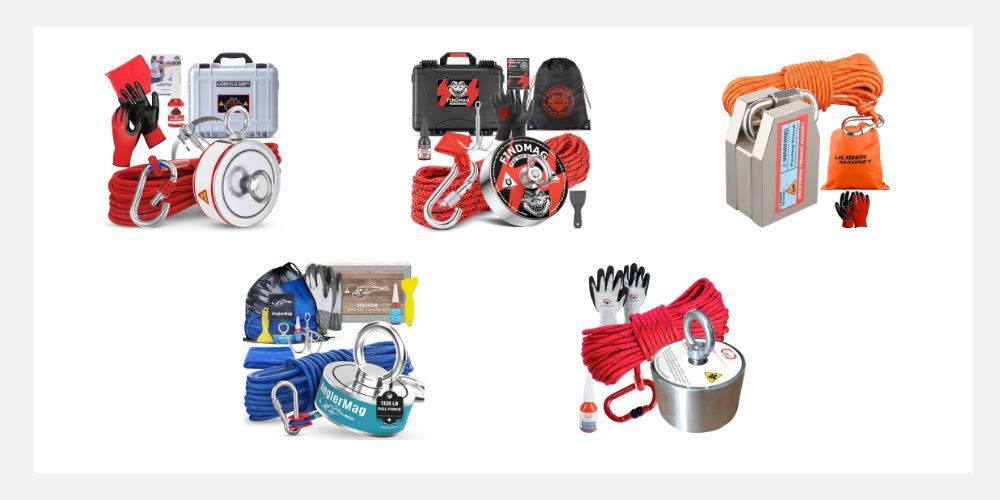Neodymium Magnets
Neodymium Magnets: The Strongest Magnets for Industrial Applications
Imagine lifting a car using a hand-sized tool or recovering sunken ship treasures inaccessible to the human diver. This isn't an excerpt from a science fiction novel, but the reality when you harness the power of Neodymium magnets. Unrivaled in strength and diverse in applications, these magnetic marvels continue to redefine boundaries across multiple industrial sectors. Ready to be amazed? Dive into our exploration of how Neodymium magnets are transforming industries with their formidable force.
Neodymium magnets, also known as NdFeB or NIB magnets, are strong permanent magnets made from an alloy of neodymium, iron, and boron. They belong to the Rare-Earth magnet family and have the highest magnetic properties among all permanent magnets. Neodymium magnets find applications in various industries such as manufacturing, crafts, medical instruments, audio components, home improvement projects, artwork hanging, science projects, and more. They have high saturation magnetization, resistance to demagnetization, and excellent longevity if handled properly. Visit our website for more detailed information on neodymium magnets and options to purchase them.

Neodymium Magnets: An Overview
Neodymium magnets, also known as NdFeB or NIB magnets, are at the forefront of modern magnet technology. These magnets belong to the Rare-Earth magnet family and are renowned for their unmatched strength and wide range of industrial applications. Whether you're in manufacturing, engineering, or even arts and crafts, neodymium magnets offer a powerful magnetic force that can revolutionize your projects. In this section, we will explore the origins and composition of these fascinating magnets, providing you with a deeper understanding of their incredible capabilities.
According to a report from Grand View Research, the global Neodymium Magnet market size was valued at USD 7.12 billion in 2020 and is expected to grow at a compound annual growth rate (CAGR) of 8.3% from 2021 to 2028.
The same report cites that in terms of volume, the demand for Neodymium Magnets stood at 100.5 kilotons in the year 2020.
A study by BCC Research revealed that the Rare Earth magnet market, within which Neodymium Magnets form a major part, is projected to reach nearly $11.3 billion by 2024.
- Neodymium magnets are the strongest permanent magnets in the world.
- These magnets are made from an alloy of neodymium, iron, and boron.
- Neodymium magnets are used in a wide range of applications, including electronics, motors, and medical devices.
- They can generate a powerful magnetic field that can attract or repel other magnetic materials.
- Due to their strength, neodymium magnets should be handled with caution as they can cause injury if mishandled or swallowed.
Origins and Composition of Neodymium Magnets
To truly grasp the astounding properties of neodymium magnets, it's essential to dive into their origins and composition. These phenomenal magnets are made from an alloy of neodymium (Nd), iron (Fe), and boron (B). The combination of these elements results in a product that surpasses other permanent magnets in terms of strength.
Neodymium magnets were first developed in the 1980s as part of research efforts to improve magnetic material performance. The development of these powerful magnets opened up new possibilities for various industries by providing a magnet with incomparable strength.
Imagine walking into a manufacturing facility where small parts are scattered across tables. With just a flick of a neodymium magnet wand, all those tiny metal pieces align along the magnetic field lines, leaving surfaces clean and organized.
The key to their extraordinary strength lies in their atomic structure. Neodymium magnets have high saturation magnetization and resistance to demagnetization, making them exceptionally strong compared to other materials. Smaller neodymium magnets can achieve the same effect as larger magnets made from alternative materials.
Due to their incredible magnetic properties, neodymium magnets find widespread use in consumer electronics, medical instruments, audio components, artwork hanging systems, science projects - the list goes on! The possibilities are endless when it comes to harnessing the power of neodymium magnets.
Unique Strengths of Neodymium Magnets
Neodymium magnets possess a range of unique strengths that make them highly sought after in various industrial applications. One of their standout features is their exceptional magnetic strength. These magnets, also known as rare-earth magnets, have the highest magnetic properties among all permanent magnets. The combination of neodymium, iron, and boron in their composition creates a powerful magnetic field that allows them to attract and hold substantial amounts of metallic objects.
Additionally, neodymium magnets exhibit high saturation magnetization, meaning they can generate strong magnetic fields even when subjected to external influences. This characteristic makes them highly reliable for industrial purposes where consistent and robust magnetic forces are required. Another distinct advantage of neodymium magnets is their resistance to demagnetization. They maintain their magnetic strength over time, undergoing less than approximately 1% loss of flux density over a decade if not exposed to demagnetizing influences.
Furthermore, neodymium magnets are relatively small and compact compared to other magnet materials while still delivering the same level of magnetism. This property opens up possibilities for innovative designs and applications in industries where space is limited or weight considerations are significant.
Comparison With Other Magnetic Materials
When it comes to comparing neodymium magnets with other magnetic materials, they outshine most alternatives in terms of sheer magnetic strength. Unlike ceramic or ferrite magnets, which are commonly used but have lower magnetic forces, neodymium magnets offer considerably higher levels of attraction.
Even when compared with other rare-earth magnets like samarium cobalt, neodymium magnets prevail due to their superior performance. Neodymium magnets demonstrate greater resistance to cracking and chipping, making them more durable in demanding environments.
While samarium cobalt magnets may excel in high-temperature applications or scenarios requiring excellent corrosion resistance, neodymium magnets provide a stronger alternative for most industrial uses. The wide range of shapes, sizes, and premium grades available for neodymium magnets also allows for more flexibility in fulfilling diverse application requirements.
For instance, in the manufacturing industry, neodymium magnets can be utilized to hold small parts securely during intricate assembly processes. In the field of medicine, these magnets play a vital role in medical instruments and diagnostic equipment such as MRI machines. Additionally, neodymium magnets find significant applications in the audio industry, where they contribute to high-quality sound reproduction in speakers and headphones.
Industrial Applications of Neodymium Magnets
Neodymium magnets, also known as NdFeB magnets, are renowned for their immense strength and versatility. These powerful magnets find widespread use across various industries due to their unique properties. From manufacturing to medical applications, neodymium magnets play a crucial role in ensuring efficiency, precision, and reliability.
Imagine a manufacturing plant that relies on conveyor systems to transport heavy materials. Neodymium magnets can be strategically placed along the conveyor belt to attract and securely hold metallic objects. This not only streamlines the production process but also enhances worker safety by preventing accidents caused by loose or shifting items.
In the medical field, neodymium magnets are invaluable in diagnostic equipment like magnetic resonance imaging (MRI) machines. These machines utilize the strong magnetic field generated by neodymium magnets to produce detailed images of organs and tissues within the body. This non-invasive technique aids in diagnosing a wide range of conditions, enabling timely treatment and care for patients.
By showcasing these examples, it becomes evident how neodymium magnets revolutionize diverse industrial sectors with their exceptional performance. Now, let's focus on two specific industries where these magnets have significant impact: manufacturing and medical.
In Manufacturing and Medical Industries
The manufacturing industry heavily relies on neodymium magnets for a plethora of applications. Their superior strength allows for efficient handling and sorting of metal components in assembly lines. Manufacturers leverage this magnet's power to secure parts during machining processes or welding operations, ensuring precise alignment and reducing errors.
Neodymium magnets also find extensive utilization in the automotive sector, particularly in electric vehicles (EVs). The powerful magnetic force produced by these magnets enables efficient electric motor operation, contributing to smoother acceleration and overall vehicle performance.
In the medical field, apart from MRI machines mentioned earlier, neodymium magnets are used in various medical equipment such as blood separators, drug delivery systems, prosthetics, and dental devices. These magnets provide reliable and precise control, facilitating the advancement of medical procedures and treatments.
As we can see, neodymium magnets have proven to be invaluable in manufacturing and medical industries due to their exceptional strength, efficiency, and versatility. Understanding the different grades and shapes of these magnets further enhances our knowledge of their diverse applications.
Understanding Grades and Shapes of Neodymium Magnets
When it comes to neodymium magnets, understanding their grades and shapes is essential to harness their incredible magnetic strength for industrial applications. Neodymium magnets come in various grades, which determine their magnetic properties such as strength, resistance to demagnetization, and maximum temperature tolerance. Additionally, these magnets are available in different shapes to accommodate specific application requirements.
Now that we have a basic understanding of the importance of grades and shapes in neodymium magnets, let's delve deeper into the significance of the various grades from N30 to N52.
Understanding the grades and shapes of neodymium magnets is crucial for harnessing their magnetic strength in industrial applications. The different grades determine the magnetic properties, such as strength, resistance to demagnetization, and maximum temperature tolerance. Neodymium magnets also come in various shapes to meet specific application needs.
From N30 to N52: What Do These Grades Mean?
The "N" in the grading system stands for neodymium, indicating that these magnets are made with a neodymium-iron-boron alloy. The number following the "N" represents the maximum energy product in Mega-Gauss-Oersteds (MGOe), which is a measure of the magnet's strength. In simple terms, the higher the grade number, the stronger the magnet.
For example, an N52 neodymium magnet has a higher maximum energy product compared to an N30 magnet. This difference in strength allows N52 magnets to exert a more powerful magnetic field and attract objects with greater force.
When selecting a grade for your industrial application, it's essential to consider factors such as size limitations, required holding force, and environmental conditions. Higher-grade magnets may be preferable in applications where maximum magnetic strength is crucial, while lower-grade magnets can suffice for less demanding situations.
It's worth noting that higher-grade neodymium magnets tend to be more expensive due to their superior magnetic properties. However, choosing the appropriate grade ensures optimal performance and efficiency in your specific industrial application.
Let's imagine you're working on a project where you need a small yet strong magnet to hold metal components securely. In this scenario, opting for a higher-grade neodymium magnet, such as N52, would provide the necessary holding force despite its small size.
Now that we understand the significance of different grades in neodymium magnets, let's explore other factors to consider when selecting these magnets for industrial applications.
Author: Will Flaiz













